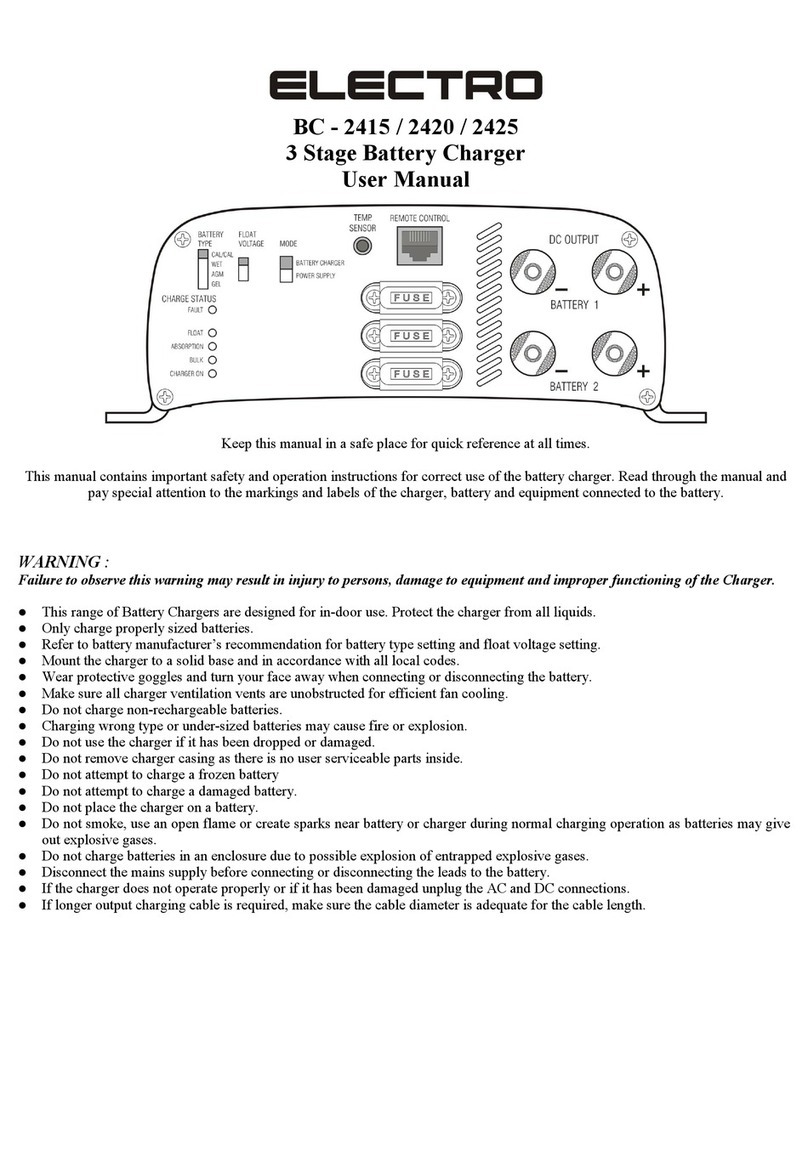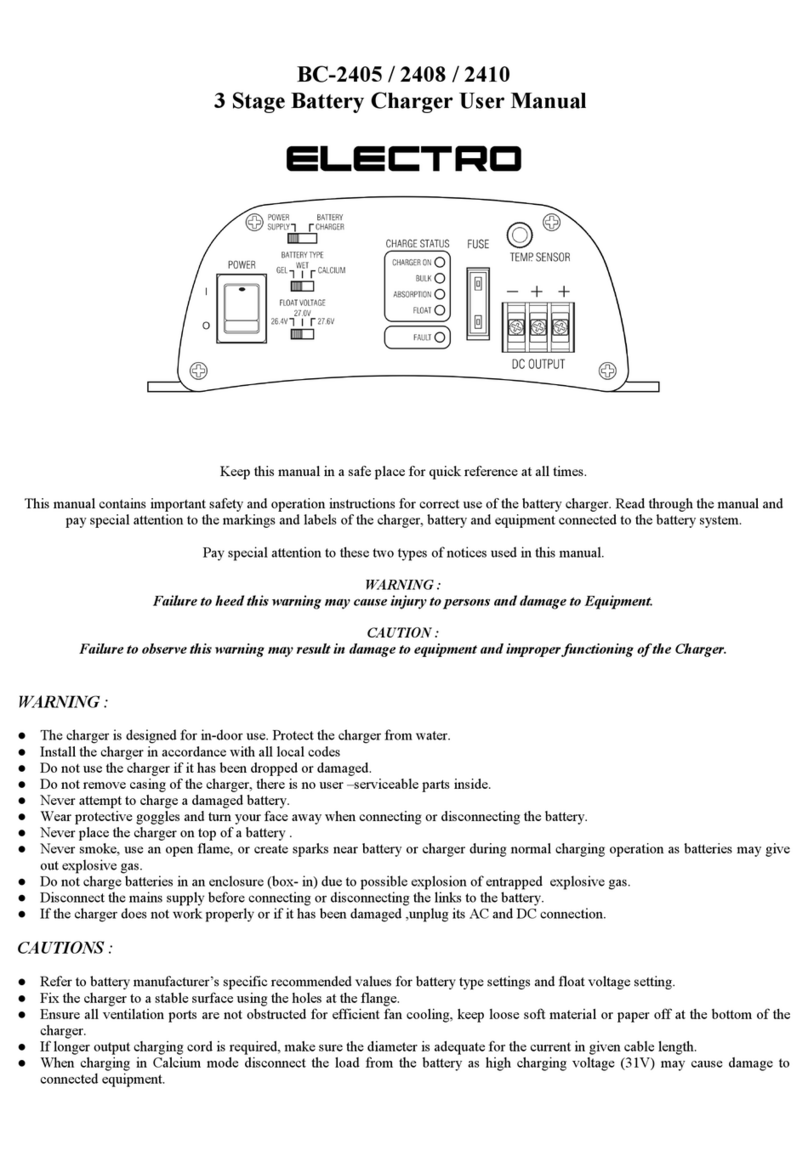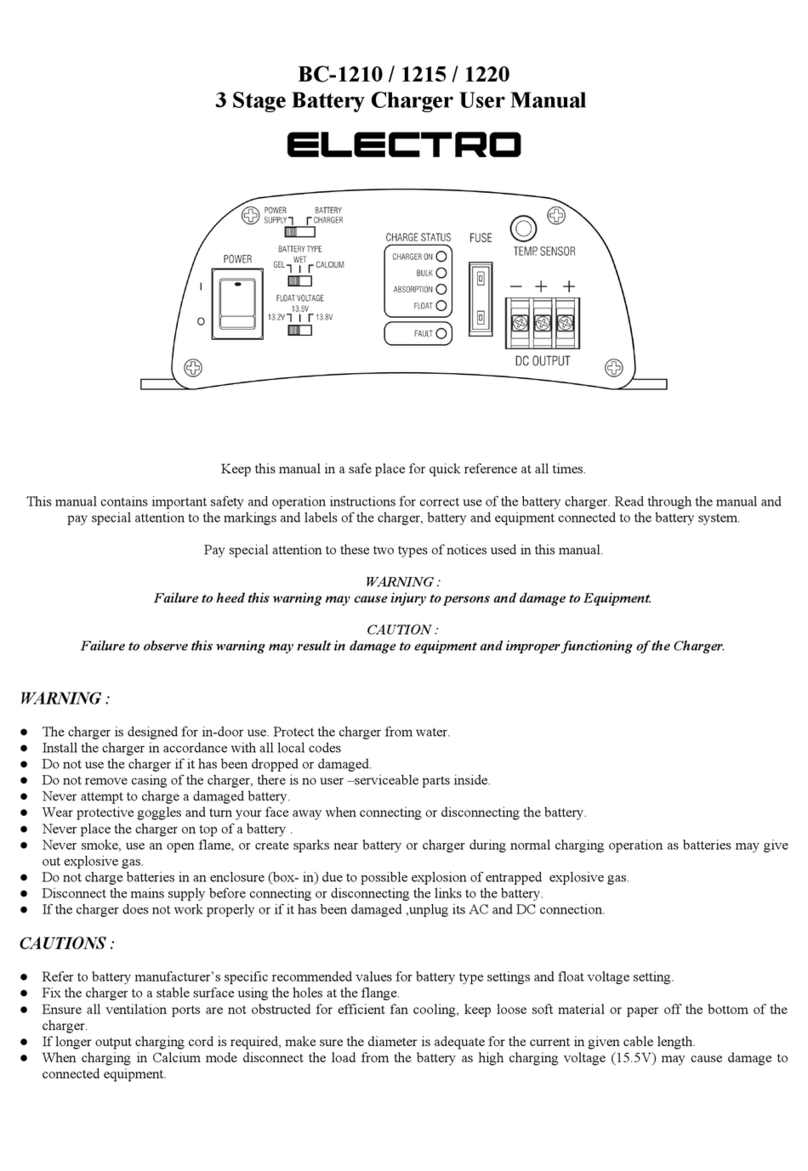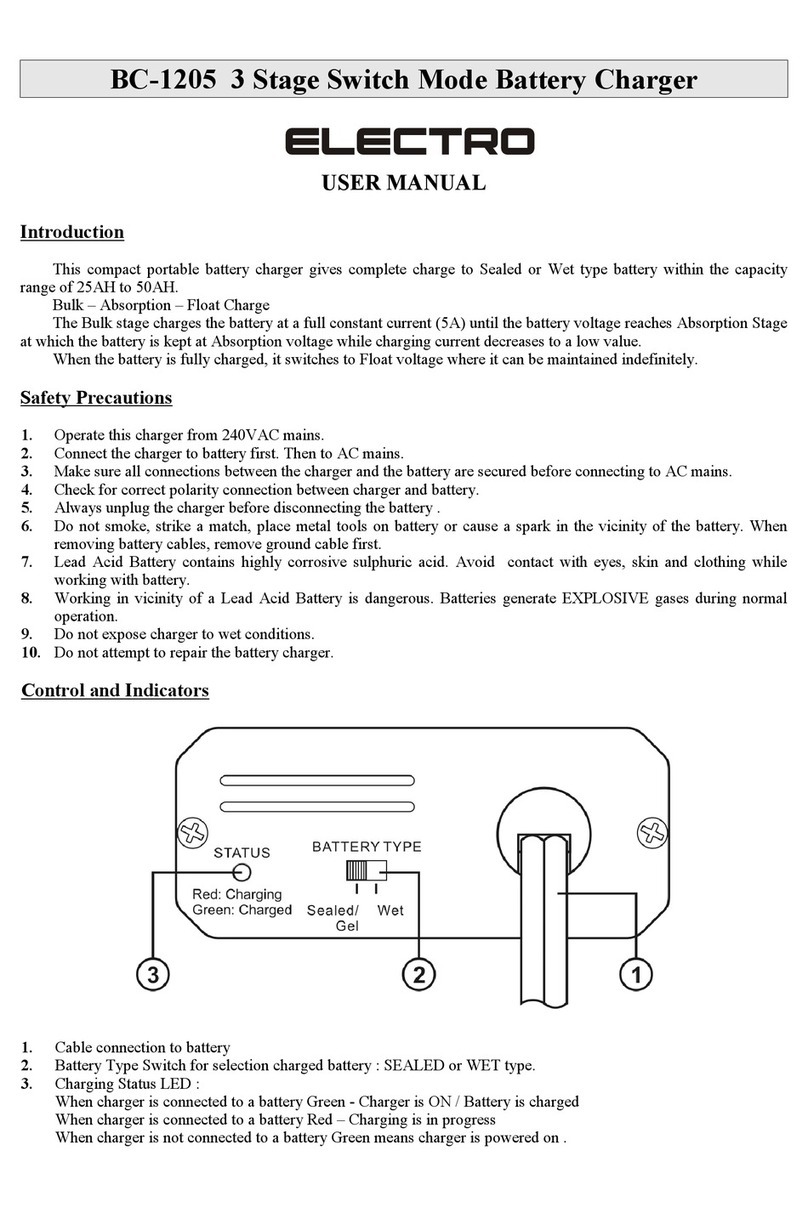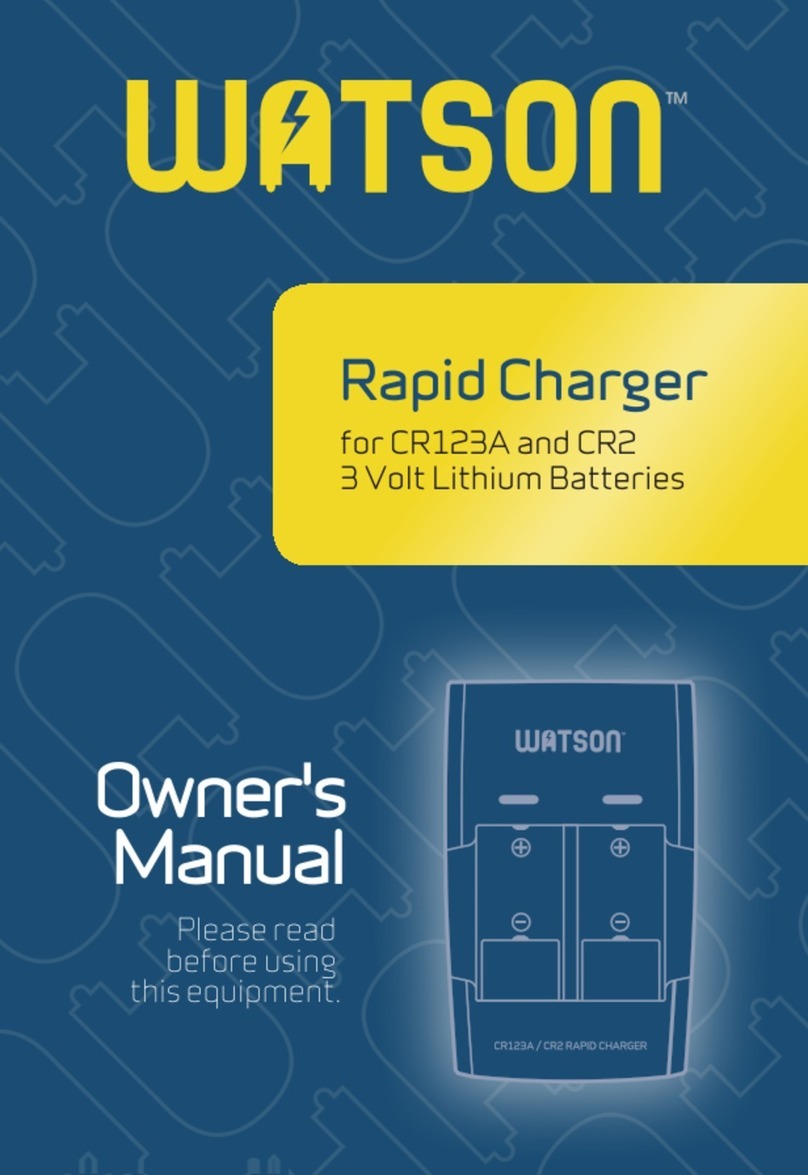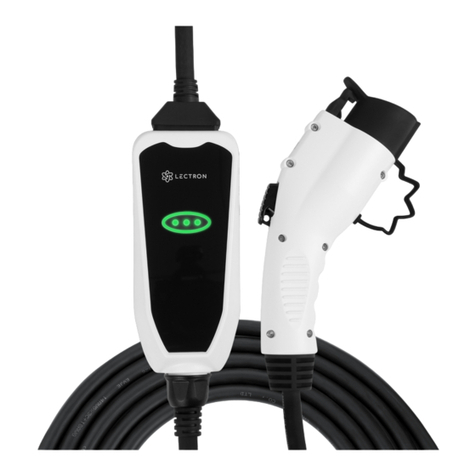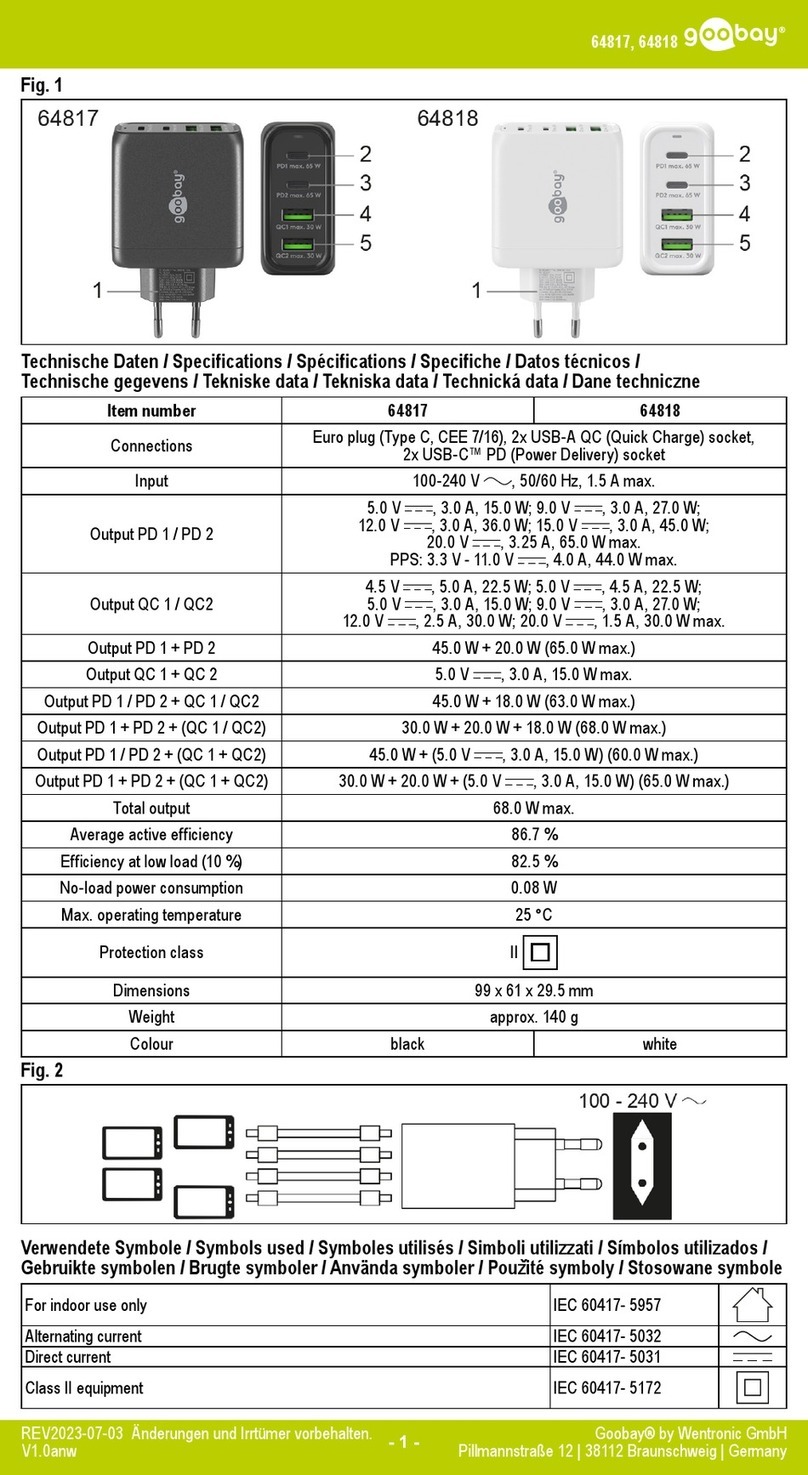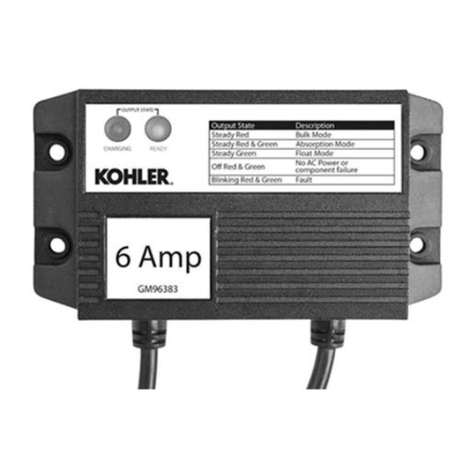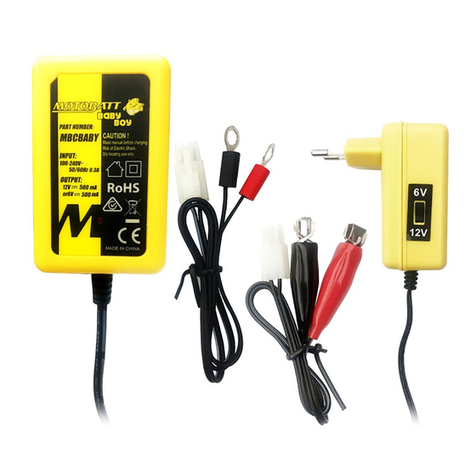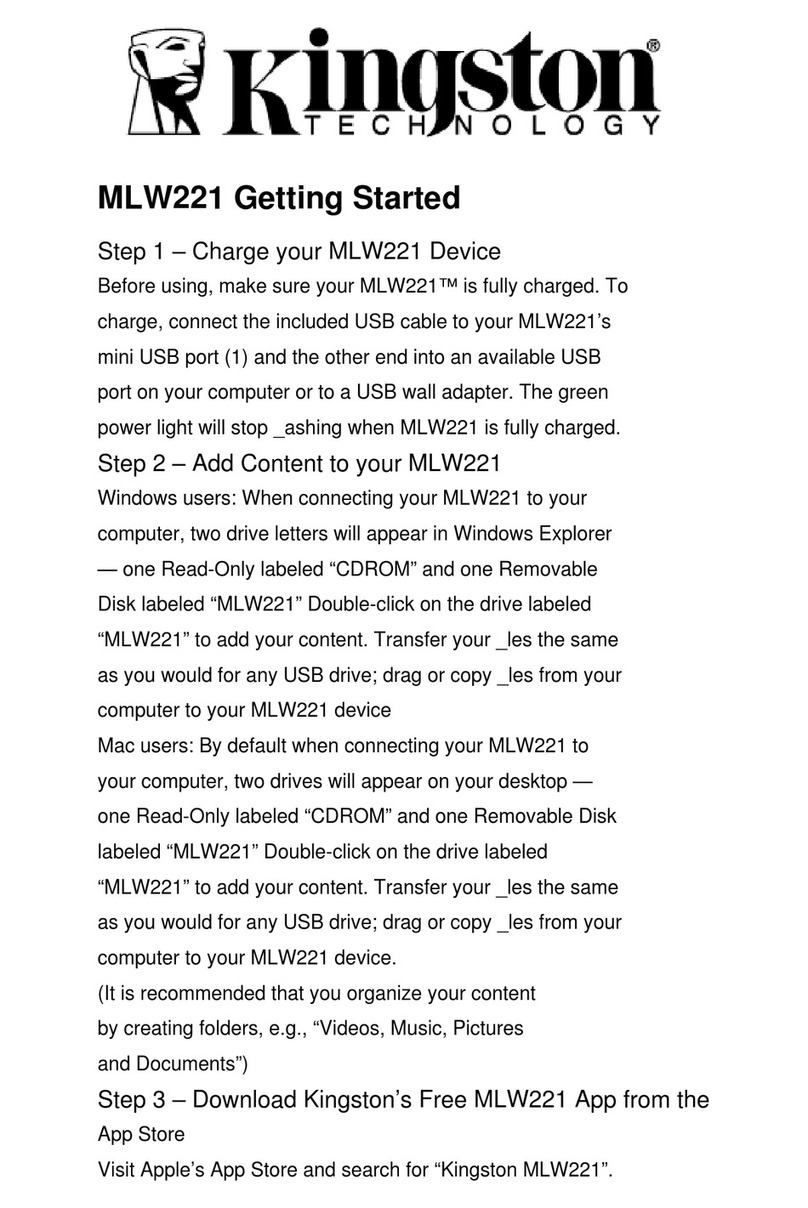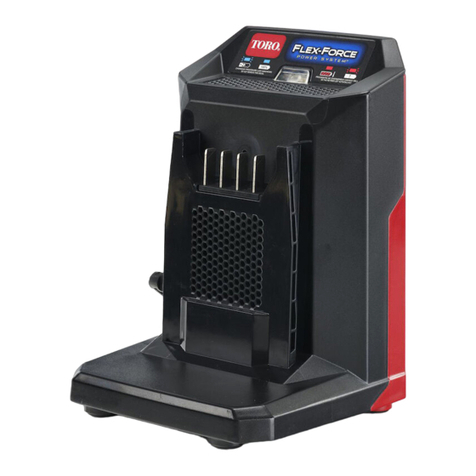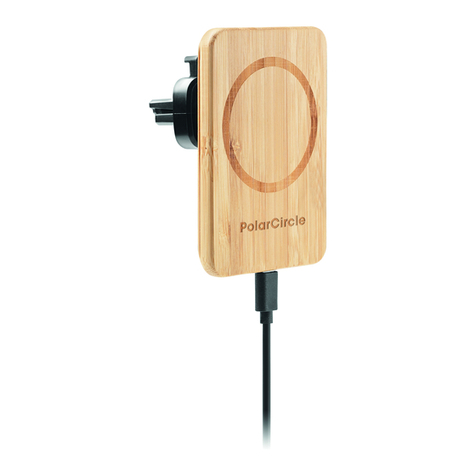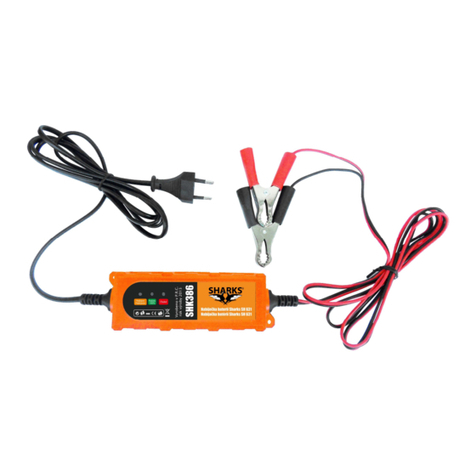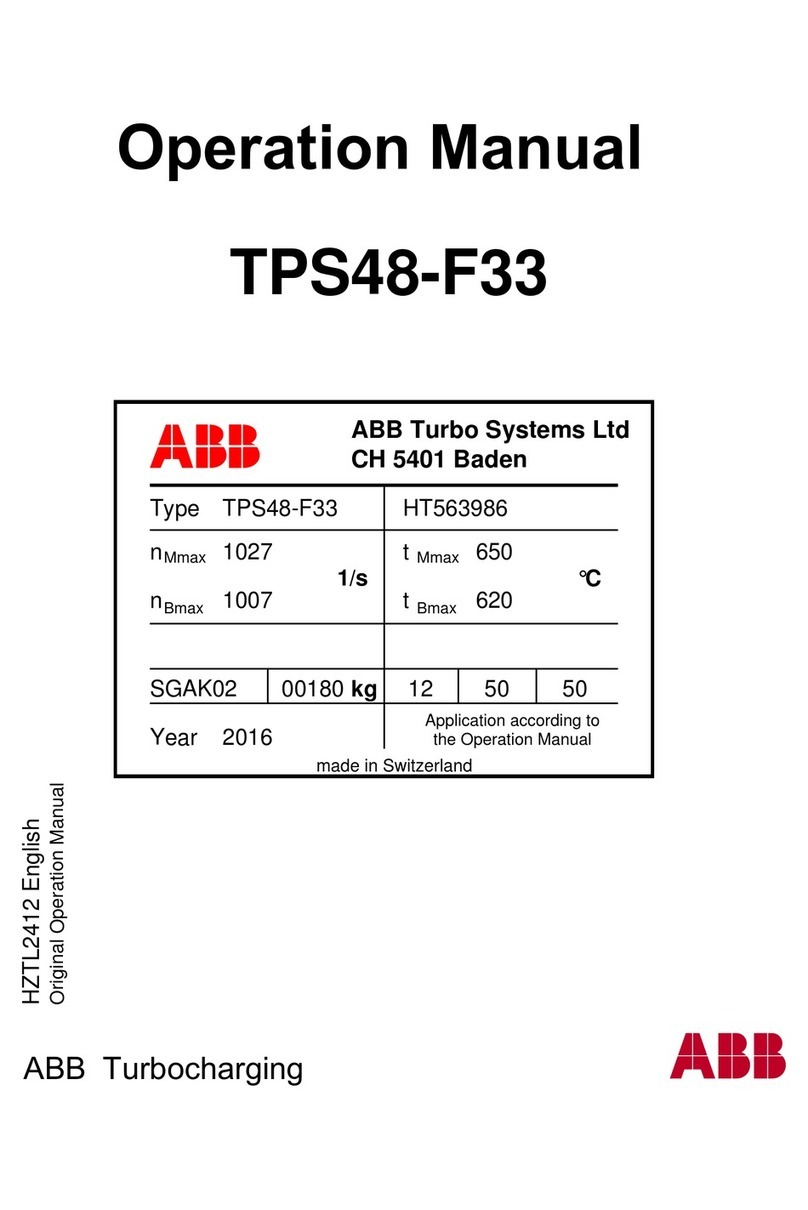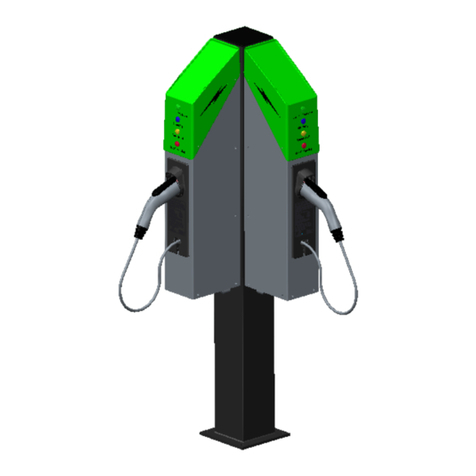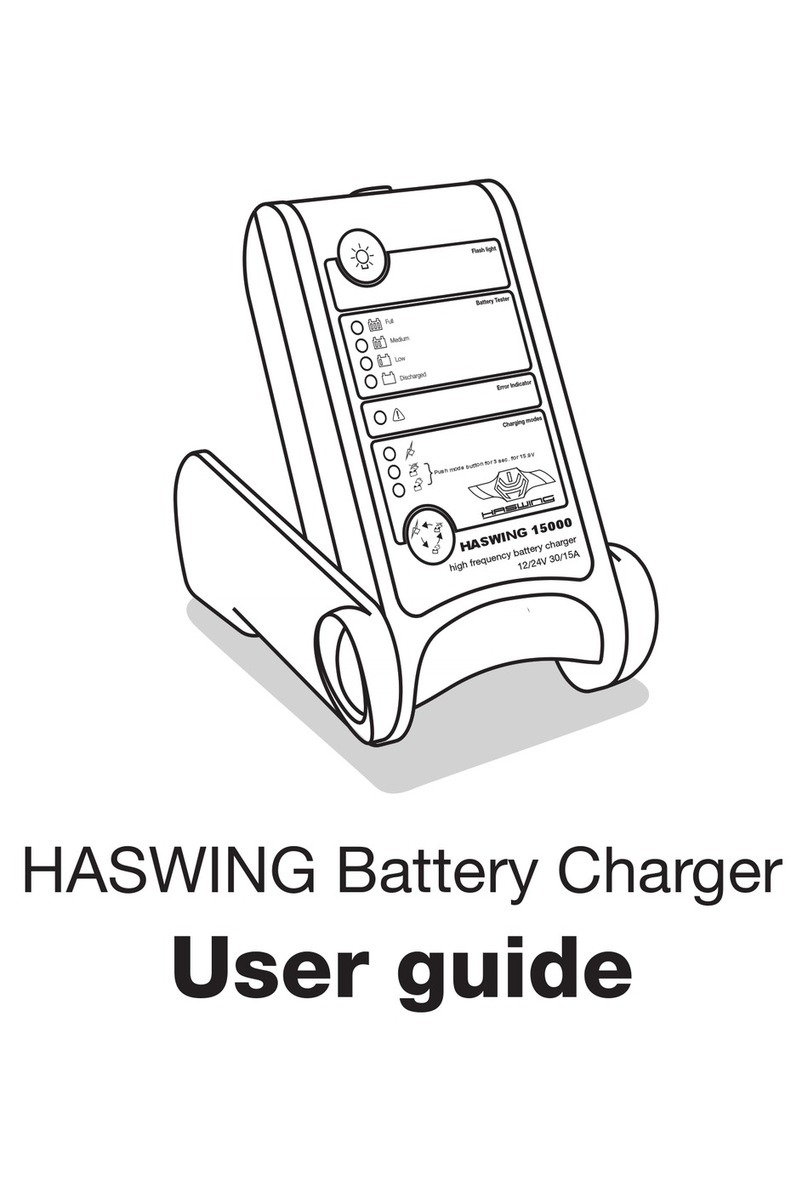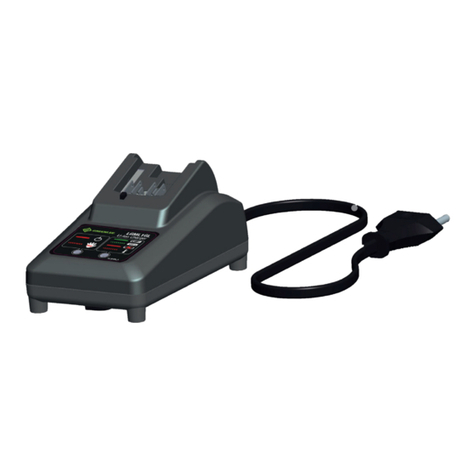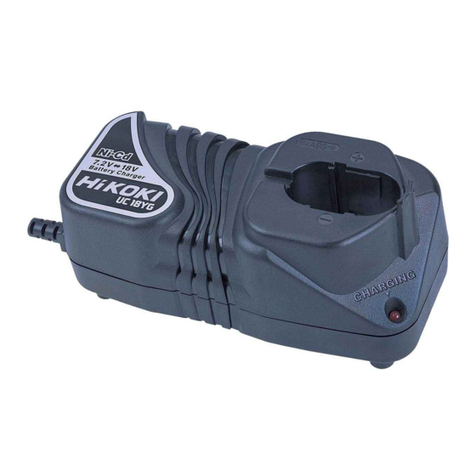Electro BC-1230 User manual

BC - 1230 / 1240 / 1250
3 Stage Battery Charger
User Manual
Keep this manual in a safe place for quick reference at all times.
This manual contains important safety and operation instructions for correct use of the battery charger. Read through the manual and
pay special attention to the markings and labels of the charger, battery and equipment connected to the battery.
WARNING :
Failure to observe this warning may result in injury to persons, damage to equipment and improper functioning of the Charger.
●This range of Battery Chargers are designed for in-door use. Protect the charger from all liquids.
●Only charge properly sized batteries.
●Refer to battery manufacturer’s recommendation for battery type setting and float voltage setting.
●Mount the charger to a solid base and in accordance with all local codes.
●Wear protective goggles and turn your face away when connecting or disconnecting the battery.
●Make sure all charger ventilation vents are unobstructed for efficient fan cooling.
●Do not charge non-rechargeable batteries.
●Charging wrong type or under-sized batteries may cause fire or explosion.
●Do not use the charger if it has been dropped or damaged.
●Do not remove charger casing as there is no user serviceable parts inside.
●Do not attempt to charge a frozen battery
●Do not attempt to charge a damaged battery.
●Do not place the charger on a battery.
●Do not smoke, use an open flame or create sparks near battery or charger during normal charging operation as batteries may give
out explosive gases.
●Do not charge batteries in an enclosure due to possible explosion of entrapped explosive gases.
●Disconnect the mains supply before connecting or disconnecting the leads to the battery.
●If the charger does not operate properly or if it has been damaged unplug the AC and DC connections.
●If longer output charging cable is required, make sure the cable diameter is adequate for the cable length.
CAUTIONS:
When charging in Calcium mode disconnect the load from the battery as high charging voltage (15.5V) may cause damage to
connected equipment.

Introduction
Congratulations on purchasing our new 3-Stage Switch Mode Battery Charger.
This battery charger is suitable for charging Wet, Sealed (VRLA), Calcium-Calcium, GEL and AGM batteries.
It is a fully automatic battery charger that can be permanently left connected to the battery.
These battery chargers have ability to charge two batteries simultaneously.
The special selectable Power Supply Mode allows charging of the battery with an external load.
Intended Use:
All Automotive, Marine, Mobile Home, Electric Scooters, Golf Carts, Solar, Deep Cycle, UPS Standby, Industrial & Commercial
Applications.
A. Control and Indicators
1. Battery Charger / Power Supply Selection
Slide the Switch to select 3-Stage Charging or Power Supply Mode (See Section G)
2. Battery Type Selection
Slide the Switch to select charging mode for GEL, AGM, Wet or Calcium-Calcium type battery.
3. Float Voltage Selection
Slide the Switch to select Float Charge Voltage (13.2 / 13.5V / 13.8V).
4. Charge Status LED Display
Charger ON : Green - 3-Stage Charger Mode
Red - Power Supply Mode
BULK : Red - Bulk charging with constant maximum current
ABSORPTION : Orange - Absorption charging with preset constant maximum voltage.
FLOAT : Green - Float charging with preset constant voltage
5. FAULT LED (Red)
Charger malfunction (See Trouble Shooting)
6. Car Blade Fuse
Reverse polarity protection fuse. Replace with same value.
7. Output Cable Terminals
Output charging cables terminals. Please observe polarity when connecting cables.
8. Remote Temperature Sensor Socket
Connection to Temperature Sensor ATS-5120.
Temperature Sensor will increase / decrease charge voltage at low / high battery temperatures.
9. Remote Control Socket
Connection to optional Remote Control Panel (ABD-4120).
Fig.1

10. Power Switch
AC mains power ON/OFF switch.
11. AC Socket with inbuilt Fuse Holder
Connect to AC mains power with supplied AC power cord.
B. Battery Type Selection
GEL : Gel sealed type maintenance free.
AGM : AGM and VRLA sealed type maintenance free.
WET : Automotive or Deep Cycle Lead Acid Batteries to which water can be added to, Calcium & Calcium-Calcium.
CALCIUM : Calcium-Calcium type batteries are to be charged in this mode only when boost is required (15.5V). No load is
to be connected to the battery during this charge mode. Charge through one cycle only then set back to WET
charge setting.
B1. FLOAT VOLTAGE SELECTION
Follow the markings on the batteries for selecting Float Voltage setting. Choose 13.8V when in doubt or when operating in
Power Supply Mode.
B2. Recommended Battery Capacity
The following minimum AH capacity is a generalized suggestion as some batteries can take higher charge currents. Check with
battery manufacturers for charging details.
Charger Model BC-1230 , 30A BC-1240 , 40A BC-1250 , 50A
Battery Capacity 100 AH - 300 AH 120 AH - 400 AH 150 AH - 500 AH
C. Battery Charger Installation and Connection
Observe warnings and safety precautions before operating the charger.
Check the battery condition, check the cell levels for wet type batteries and clean the battery terminals.
Secure the battery charger in a well ventilated area making sure the mounting surface is flat. The air intake is at the bottom and the
air outlet is at the back. Make sure both intake and outlet are not blocked.
Never place charger on top of a battery.
Plug in the AC mains and switch on the AC Power Switch. The Charger On LED and the Float LED should be on green indicating
the Charger is ready for charging.
Before connecting or disconnecting the charging cable, switch off the AC Power Switch and unplug the AC mains cord.
First connect the Red cable to Positive (+) Terminal of the Charger and then to Battery Positive (+) Terminal.
Second connect the Black cable to Negative (–) Terminal of the Charger then to Battery Negative (–) Terminal.
Make sure all the connections are tight and secure as voltage drops can occur.
Check again for correct charging settings.
Fig.2

D. Normal 3-Stage Charging Operation
3-stage battery charging operational graph.
Stage 1. BULK. Constant current charging, Bulk LED is on.
The battery is charged at constant maximum current until it rises to the selected Absorption voltage level.
The charging voltage changes with the battery voltage.
If the initial battery voltage is less than 9V due to deep discharge, the bulk charge current is reduced to half of the maximum until
battery voltage rises over 9V.
Stage 2. ABSORPTION. Constant voltage charging, Absorption LED is on .
Battery Type Selection : Gel : 14.1V / AGM: 14.3V / Wet : 14.4V / Calcium-Calcium : 15.5V
When the battery voltage rises to the selected Absorption Voltage Level, the charging switches to Constant Voltage Charging and
the battery is over 85% full. The battery is kept at this high voltage while the current reduces gradually to set value at which the
charger automatically switches to Float Stage.
Stage 3. FLOAT. Constant voltage charging, Float LED is on.
Float Voltage Selection : 13.2V / 13.5V / 13.8V
In this stage the battery is full and only takes in the amount of current necessary to maintain the battery capacity. The float voltage
is preset by the user according to the type of battery used.
E. Manual Equalization Charging for Wet and Calcium-Calcium type batteries
Wet lead acid and Calcium-Calcium type batteries require periodic high voltage charging to balance the voltage of each cell, to
reverse the high concentration of electrolyte at the bottom and clear up large sulfate crystals on the plates. You can use the
Calcium–Calcium selection to perform manual equalization by carefully following battery manufacturer’s instructions.
Make sure to manually switch off the charger at the end of equalization charging.
Take special precautions as batteries will emit explosive gases during equalization charging.
Do not have any loads connected to the batteries during equalization charging as higher voltage (15.5V) may cause damage to
equipment.
F. Dual Battery Charging
This feature is for caravans and vehicles with two separate batteries.
The two batteries must be of same chemical make up and type to avoid over or under charging because only one setting of
charging profile is possible for both.
Two batteries are charged simultaneously and the battery with the lower level will receive larger share of the current in the Bulk
Charge Stage until it is brought up to the same voltage level as the other battery .
Both batteries will go to Absorption and Float Charge at the same time.
Fig.3

G. Power Supply Mode/2-Stage Battery Charger (see Fig.4)
In this mode the Charger can be used as Power Supply or 2-Stage Battery Charger.
This selected mode is intended to charge the batteries with external loads such as in caravans and motor homes.
The external load can draw power from the charger while the charger is charging the battery. The charger is not affected by the
current draw being diverted by an external load as it will switch from Bulk to Float Mode.
2-Stage charger cannot completely charge the battery when the charger switches from Bulk to Float Mode and the battery will in
most cases be about 80% charged. The battery will receive the remaining charge while in Float Mode over several days.
It is highly recommended to switch to 3-Stage Charger Mode periodically when the external load is disconnected.
The external load should not exceed 50% of the maximum current draw of the charger unless the battery is fully charged. If the
Bulk LED is on most of the time then the load is too large.
G1. Power Supply Mode
The charger can also be used as a stand alone power supply without connection to a battery
It will provide a constant voltage according to the selected Float Voltage (13.2/13.5/13.8V) and rated DC current of the charger.
It is not recommended for high surge loads in stand alone applications as the initial high surge currents can trigger the overload
protection circuit.
Fig.4 Power Supply / 2-Stage Charger Mode Application

H. Temperature Sensor
Warning :
The temperature sensor must be installed at the Negative Terminal of the battery terminal, wrong connection to the Positive
Terminal will damage the charger and the sensor .
Temperature Sensor ATS-5120 is to be used for optimal charging over wide range of ambient temperatures.
Fix the temperature sensor on the battery that is not affected by external cooling or heating source.
Plug in the temperature sensor and then switch on the charger to activate the temperature control function.
Do not plug in the Temperature Sensor into the Charger during charging.
I. Cable Size Selection
Wire Size (AWG) Area (mm2) Maximum one-way distance
(Metres) for 2% Voltage loss
(12V 30A)
Maximum one-way distance
(Metres) for 2% Voltage loss
(12V 40A)
Maximum one-way distance
(Metres) for 2% Voltage loss
(12V 50A)
10 5.26 1.2 0.9 0.7
8 8.37 1.8 1.4 1.1
6 13.3 2.9 2.2 1.7
4 21.2 4.6 3.4 2.7
2 33.6 7.3 5.5 4.4
1/0 53.5 11.6 8.4 7.0
2/0 67.4 14.6 11.0 8.8
4/0 107 23.2 17.7 14.0
Table: Selection of cable size and length versus current
Fig.5

J. Trouble Shooting
PROBLEM INDICATIONS POSSIBLE CAUSES SUGGESTED SOLUTION
Charger does not
work
Indicator lights not
on
No AC power
AC input socket fuse blown
Check AC connections.
Replace AC fuse with correct value.
No DC output Charger - On LED is
off. Float and Fault
LED’s are on.
Output short circuit
Over temperature protection triggered
Severe over loading of the charger
Reverse polarity connection
Check DC connections between charger
and the battery
Check that the air intake vent at the
bottom of the charger is not blocked.
Mount the charger in a ventilated area.
Check if the battery AH capacity is within
the recommended range
Check for correct polarity, replace the
blown car blade fuse (6)
Battery does not get
full charge
All indicator LED’s
operate normally
Bad battery connection.
Battery type select switch in wrong setting
Battery capacity too large.
Ambient temperature too low.
Battery has a damaged cell or the battery
is too old.
Check for loose contacts.
Re-check battery type and change to
correct battery selection
Make sure charger rating matches battery
capacity see table (B2)
Move the battery to a room temperature
location or use a temperature sensor
Replace the battery
Long charging time,
Float LED does not
come on even after
20 hours of charging
Absorption light
remains on all the
time
Wrong battery type selection (eg. charging
Gel battery with Calcium-Calcium OR
Wet type selection)
Total battery capacity is too high for dual
charging
Battery temperature too high
Battery is defective
A load is connected to the battery and the
charger is not in Power Supply Mode.
Check the battery label and change battery
type selection to correct setting.
Check battery capacity or charge batteries
separately
Use a temperature sensor
Replace the battery
Change charger Selector Switch (1) to
Power Supply Mode.
Bulk LED is on all
the time
Bulk light remains
on all the time when
Charger is in Power
Supply Mode,
charger ON LED (4)
is on red.
The connected load is too large, using
most of the current from the charger.
Reduce the load to about 50% of the
charger's rating current or take away the
load and set the Charger to Battery
Charger Mode to fully charge the battery
before returning back to the Power Supply
Mode.
Bulk light remains
on all the time when
the Charger is in
Battery Charger
Mode
Wrong battery type selection
Battery is excessively depleted and the
soft charging is triggered
Battery temperature is too high
Check the battery label and change the
battery type selection to correct setting.
Recharge the battery after a day, if bulk
light remains after several hours, the
battery is most likely damaged and cannot
accept charge. Replace the battery.
Use a temperature sensor

K. Specifications
Model BC – 1230 BC – 1240 BC - 1250
Output
Absorption Charge Voltage Selections GEL : 14.1V ; AGM: 14.3V ; WET : 14.4V ; CALCIUM-CALCIUM : 15.5V
Absorption Charge Timer Limited not over 4hrs
Float Charge Voltage Selections 13.2V, 13.5V, 13.8V
Battery Charger / Power Supply Selections Yes Yes Yes
Maximum Output Charging Current (Continuous) 30A 40A 50A
Recommended Battery Capacity Range 100 – 300AH 120 – 400AH 150 - 500AH
Soft Start Bulk Charge
Battery Voltage to Trigger (cut-in) Soft Start
Bulk Charge Mode
<9V
Soft Start Bulk Charge Current (Current Limit) 15A 20A 25A
Ripple and Noise (Peak to Peak) <200mV <200mV <200mV
Efficiency at Maximum Power (100V/230V) >83/87% >83/87% >83/87%
Dual Bank Charging (Battery must be of same type) Yes Yes Yes
Input
AC Voltage Range 100 – 240V 50Hz~
AC Current at Full Load (100V/230V) 5.9/2.6A 7.5/3.2A 9.4/4.0A
Protection
Overload 90-110% Rated Output Current or 50% Rated Output Current (Soft Charge)
Protection Type : Constant Current Limiting, recovers Automatically after
Fault Condition is Removed.
Short Circuit Recovers Automatically After Fault Condition is Removed
Reverse Polarity Car Blade Fuse
Over Temperature Protection Type: Shut Down
OVP Output Over Voltage Yes
Cooling Cooling Method Thermostatic, Variable Speed Fan
Indicators
3-Stage Battery Charger / Power Supply Mode Yes
Charge Phase Bulk / Absorption / Float Yes
Fault Mode Yes
AC Power Yes
Fuses
AC Fuses at IEC AC Power Socket T6.3A T8A T10A
DC Car Blade Fuse at Front Panel 25Ax2 30Ax2 25Ax3
Accessories
Remote Temperature Sensor, Cable & Spare Fuses Yes
Remote Control Panel Optional
Approvals
Safety : Q061375 Yes
EMC: N2926 Yes
Others Dimensions and Weight 220x80x200mm ; 2.4kg 220x80x261mm ; 3.0kg 220x80x261mm ; 3.2kg
Remarks All values are based on the standard ambient temperature 25°C and pressure 0.1Mpa.
Rev. 2 08/2009
7673-2100-2522
This manual suits for next models
2
Table of contents
Other Electro Batteries Charger manuals

